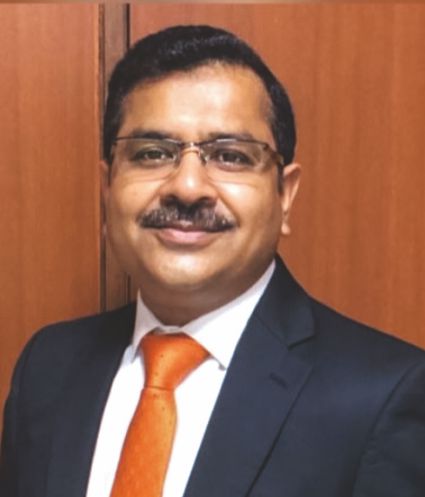Our focus on high quality and total cost of ownership (TCO) for all our raw materials has resulted in a productivity increase of 32% in on our copper and aluminium wire drawing machines.
Mr. Sandeep Bhargava, Executive President & Chief Procurement Officer, Polycab India Limited dives into the key roles he has pertaining to procurement, the strategies with regard to raw materials, and his viewpoint on the current price-rise scenario and its impact on the cable companies in an exclusive conversation with Wire & Cable India. Furthermore, he also speaks on the pandemic-induced challenges with regard to supply chain, the strategies to mitigate the same, and his approach with regard to negotiations.
Excerpts from the interview:
Wire & Cable India: Kindly outline your major roles and responsibilities as an Executive President & Chief Procurement Officer within Polycab India Limited.
Sandeep Bhargava: My roles and responsibilities as a CPO includes but is not limited to identifying the needs of the company, performing market research, evaluating suppliers, selecting a supplier, and then, communicating and engaging with suppliers, and developing contracts.
My main function is to handle all the aspects of the procurement and supply chain management processes and to manage the procurement teams. As a key leader in the organization, I leverage a myriad of procurement skills to balance many sensitive leadership functions. Some of these include: managing the overall procurement strategy, balancing a budget, being constantly vigilant about finding systemic procurement and supply chain improvements. In addition, developing goals, standards, and metrics to keep track of key performance indicators (KPI) and improving processes for efficiencies are also a prominent part of my skillset.
Also, it is quite important for me to ensure that the procurement strategy is aligned properly with the company’s overall corporate strategy. As such, decisions are not often simply based on dollar amounts and quality, but keeping in view of other factors as well. For example, if a company has decided to become a representative of sustainability and green practices, then, the procurement officers must take that into account when selecting suppliers as part of their overall roles and responsibilities.
As a key leader in the organization, I leverage a myriad of procurement skills to balance many sensitive leadership functions.
WCI: Polycab has always remained ahead in the industry with continuous capacity expansions. Please share your strategy with regard to raw material sustainability!
SB: The process of sourcing commoditized raw materials is nuanced, with strategies that are not generally applied to other direct materials. Also, the current uncertain market conditions further strengthen the need for a rigid sourcing framework. There are a few important criteria that we consider while developing a sourcing strategy for RM sustainability including – identifying the supply market, distribution and logistics network, understanding the cost structure and drivers, and developing a pricing mechanism. Just as importantly, developing alternate sources and establishing a competitive situation is a significant aspect as well while formulating the sourcing strategies.
WCI: What are your thoughts on the current raw material scenario — specifically to price rise and the reason behind the surge? When are you expecting a stabilization in the prices and what will be the impact of price rise on your customers and performance of cable companies?
SB: Prices of copper, i.e., a key input for manufacturing wires and cables, have soared globally because of the greater demand-push from China and a number of other countries that have made a quick turnaround since the global lockdown wreaked trade. Moreover, prices of aluminium, another key commodity has shot up because the authorities in the top producer of the metal – China, are clamping down on energy-intensive industries to curb the carbon emissions.
These metals constitute almost 70% of overall raw material consumption in our sector. Thus, the LME prices of copper and aluminium are 40% higher now than as compared to the prices in September, 2020. Besides, the importers have to pay more in freight charges as the maritime supply-chain is stressed because of the rising international demand and a shortage of containers. The price hikes are also partly a result of higher fixed costs, lower capacity utilization and overheads such as expenses due to COVID-related safety protocols.
The prices are expected to stabilize towards the end of the current fiscal year, by which time the global economies are expected to fare better than now. This obviously means a higher cost of production for cables and wires and a higher price to be paid for them. An increase in spending on infrastructure and power will help the cable companies to perform much better.
Prices of copper, i.e., a key input for manufacturing wires and cables, have soared globally because of the greater demand-push from China and a number of other countries that have made a quick turnaround since the global lockdown wreaked trade
WCI: The pandemic caused a huge disruption in the logistics and procurement pipeline. What were the key challenges and how did you manage to effectively mitigate the supply chain disruption?
SB: For our major raw material, i.e., copper, we have annual contracts with the Japanese smelters and even during the lockdown, unlike many of our peers, we did not walk out of contracts in a panic mode, but honored them by scheduling the minimum quantity allowed by the contract. As a gesture of goodwill, all our suppliers have increased our credit period for these quantities so as to avoid putting additional stress on our working capital. Hence, when the major disruption in logistics pipeline was experienced during the Oct-Dec quarter, we were comfortably placed with regards to raw material availability and with a strong goodwill established with our suppliers.
WCI: What have been the major milestones you have achieved as a result of your strategic procurement solutions?
SB: A major milestone was achieved when we were able to break the Japanese cocoon and became the largest customer other than China for copper being exported out of Japan. Also, our focus on high quality and Total Cost of Ownership (TCO) for all our raw materials has resulted in a productivity increase of 32% in on our copper and aluminium wire drawing machines.
The benchmark negotiation in my journey of Strategic Sourcing was the negotiations with the Japanese smelters and our Company becoming the first Indian customer for copper cathodes.
WCI: What is your approach with regard to negotiations? In fact, could you mention a project/deal negotiation that you regard as a benchmark negotiation in your journey?
SB: Walking into negotiations essentially requires the knowledge of the international and regional demand and supply situation, local laws and tax structures and inter country tax treaties. Further, our business relations with the supplier are one of the major priorities for us.
Without going into details, I would like to mention that the benchmark negotiation in my journey of strategic sourcing was the negotiations with the Japanese smelters and our Company becoming the first Indian customer for copper cathodes.
WCI: The industry has been big on collaboration and technology ever since the breakout of the COVID-19 pandemic. Tell us how collaboration and technology have been the life-jacket that helped the sector stay afloat during the pandemic?
SB: Technology has been an enabler for people to connect. At times of travel restrictions and uncertainty in the entire supply chain, it becomes very essential to connect with your suppliers, your team, the manufacturing teams and the logistics service providers. That being so, the best way of communication is through technology which has taught us to stay in touch virtually. We’ve been able to make a comeback and support the manufacturing team with the help of virtual meetings which has greatly helped us taking faster decisions. It also helps put a “face to the name”.





